Mad Hedge Technology Letter
January 27, 2021
Fiat Lux
Featured Trade:
(DINOSAURS OF TECH REINVENTING THEMSELVES)
(BB), (AMZN), (BIDU), (GME)

Mad Hedge Technology Letter
January 27, 2021
Fiat Lux
Featured Trade:
(DINOSAURS OF TECH REINVENTING THEMSELVES)
(BB), (AMZN), (BIDU), (GME)

Tech companies change so quickly that sometimes companies have no choice but to reinvent themselves and that is exactly what BlackBerry (BB) has done as their stock has already delivered gains of 190% in 2021.
Historically known as a hardware business, BlackBerry decided to opt out of its legacy operations and elect for a push into enterprise software, internet of things (IoT), and cybersecurity, pivoting away from handsets as that business flagged.
That is where all the serious tech money is these days.
A torrent of positive announcement has rallied investors to this stock with the company announcing an expanded partnership with Baidu (BIDU) that will see it continue working on automated high-definition mapping software that Baidu uses in its autonomous driving technology.
Baidu is a Chinese tech company that is also hoping to reinvent themselves away from their legacy business of internet search.
Data and connectivity are opening new avenues for innovation in the automotive industry, and BlackBerry and auto companies share a common vision to provide automakers and developers with optimal data so that they can deliver new services to consumers.
The tie-up with Baidu caused the stock to shoot higher by 17.3% at $21.15 in premarket trading.
This move broadens the company's use of BlackBerry’s operating system in its "Apollo" autonomous driving open platform.
Under the expanded partnership, Baidu’s high-definition map will be integrated with BlackBerry’s QNX Neutrino real-time operating system.
The integrated system will be mass-produced and available on Guangzhou Automobile Group electric vehicle arm’s upcoming GAC New Energy Aion models.
The BlackBerry QNX software scores high in functional safety, network security, and reliability, while Baidu has achieved long-term development in artificial intelligence and deep learning.
GAC is one of China’s largest automakers. It also manufactures the Hycan 007 cars under a joint venture with EV startup NIO.
This is just an example of how BB is running to the part of the end zone where the ball is going to be thrown unlike other dinosaur tech like IBM.
The company’s stock has recently been included in strong dialogue on online message boards such as Reddit, which like GameStop (GME) has felt a sharp appreciation in price or probably better describes as rocket boosters.
GME is up 100% just today which can only be described as an epic short squeeze.
At a strategic level, the success of BlackBerry’s stock can be attributed in part to the strategic shift to cybersecurity and the Internet of Things.
The shift away from handheld devices is long due, and so what's really happening is the market is putting its stamp of approval on this new shift of BlackBerry away from its old business model and what it’s doing now.
BB holds more patents than any other company in Canada.
BlackBerry shares spiked as much as 20% after settling a patent infringement suit with Facebook.
BlackBerry first targeted Facebook with a lawsuit back in 2018, filing a 117-page complaint accusing the social network of infringing on Blackberry's innovative messaging technology.
The settlement removed any litigious uncertainty offering another clear pathway for the stock to rise.
The biggest strategic overhaul has been its recent partnerships with Amazon (AMZN) Web Services in December to use its cloud services.
They signed an agreement with Amazon for BB to develop a software platform that allows automakers to read vehicle sensor data, improving cloud-connected vehicles' performance.
Blackberry announced it sold 90 patents to China's largest phone manufacturer, Huawei.
Automakers can use this information to create responsive in-vehicle services that enhance driver and passenger experiences.
BlackBerry IVY addresses a critical data access, collection, and management problem in the automotive industry.
Cars and trucks use many different parts, with each vehicle model comprising a unique set of proprietary hardware and software components.
These components, which include an increasing variety of vehicle sensors, produce data in unique and specialized formats.
The highly specific skills required to interact with this data, as well as the challenges of accessing it from within contained vehicle subsystems, limit developers’ abilities to innovate quickly and bring new solutions to market.
BlackBerry IVY will solve these challenges by applying machine learning to that data to generate predictive insights and inferences, making it possible for automakers to offer in-vehicle experiences that are highly personalized and able to take action based on those insights.
Although many legacy tech companies get caught in the weeds, never to grow again. BB has sorted out its vision and is well on its way to delivering shareholder value back to the end investor.
Even though I would say the short-term price action in BB is at this point euphoric, it would serve any tech investor well to dip their toe into this stock long term when there is a pullback.
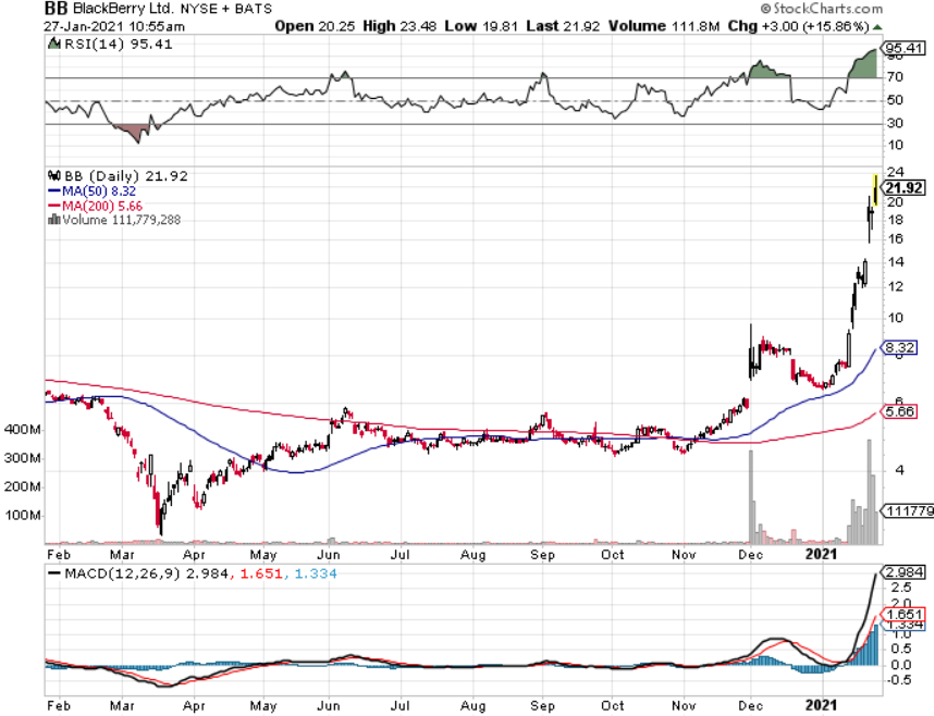
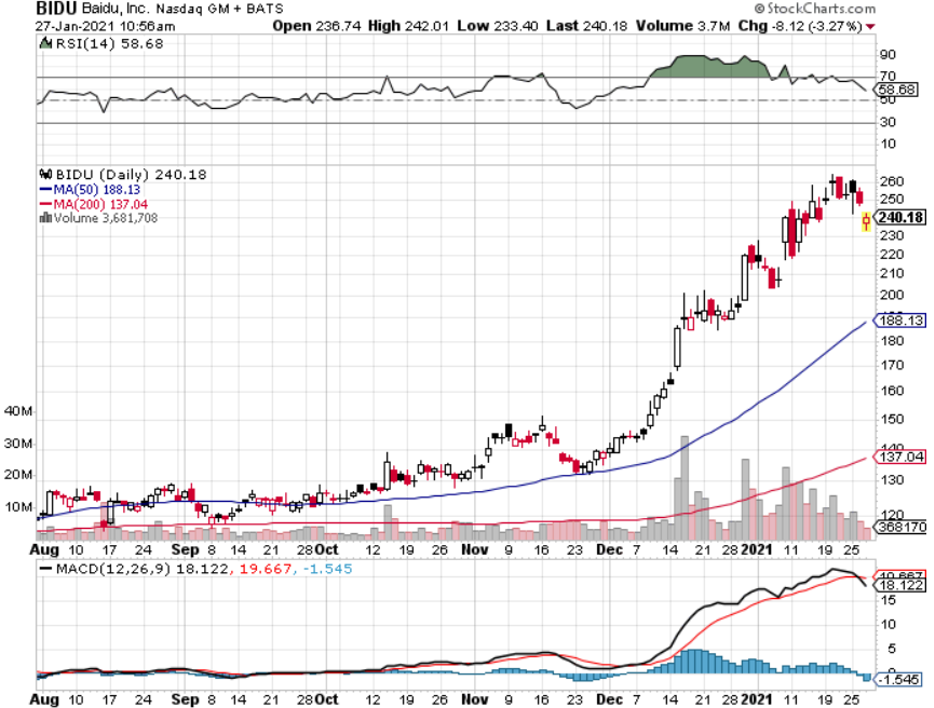
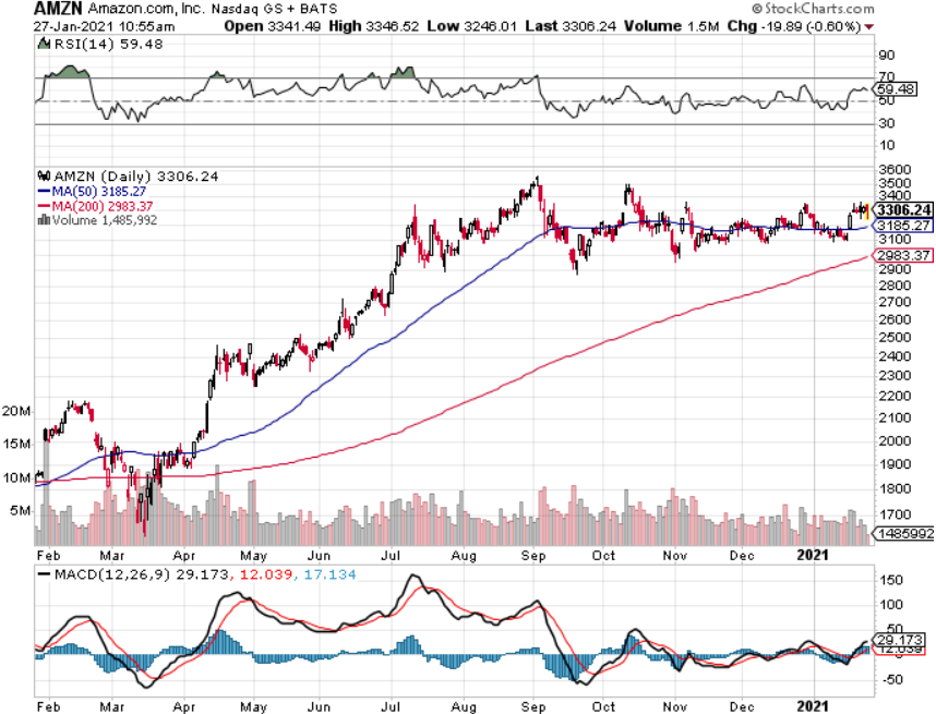
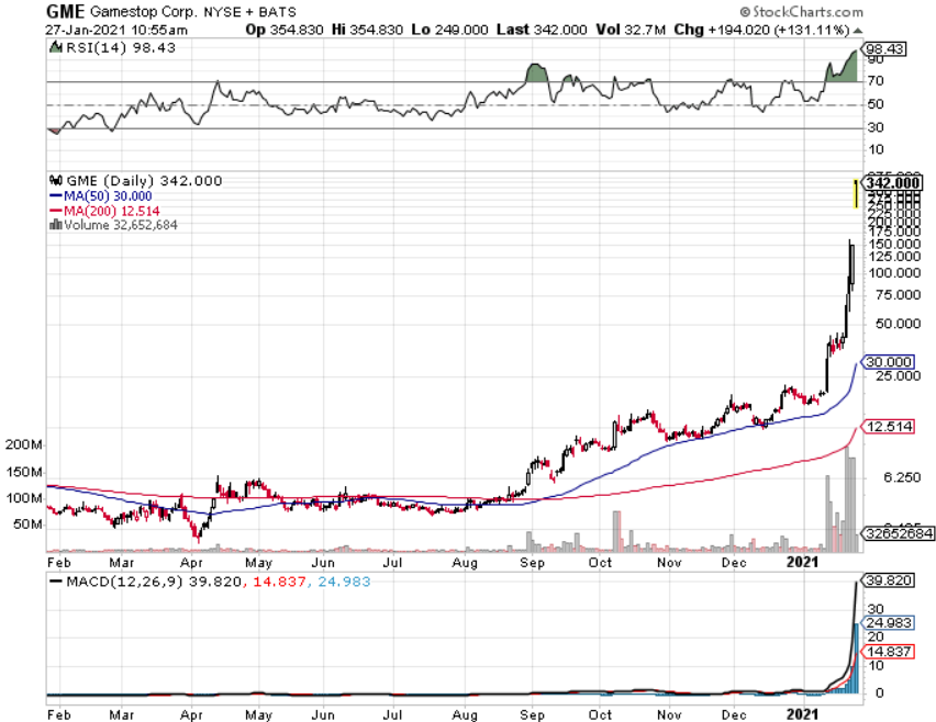
Mad Hedge Technology Letter
June 6, 2019
Fiat Lux
Featured Trade:
(THE SHAKEOUT IN GAME STOCKS)
(GME), (MSFT), (GOOGL), (APPL), (STX), (WDC)

Do not invest in any video game stocks that don’t make video games.
If you want to simplify today’s newsletter down to the nuts and bolts, then there you go.
The company that I have been pounding on the table for readers to sell on rallies has convincingly proven my forecast right yet again with GameStop (GME) capitulating 35%.
It’s difficult to find a tech company with a strategic model that is worse than GameStop’s, and my call to short this stock has been vindicated.
Other competitors that vie for awful tech business models would be in the hard disk drive (HDD) market, and that is why I have been ushering readers to spurn Western Digital (WDC) and Seagate Technology (STX).
This is a time when everybody and their grandmother are ditching hard drives and migrating to the cloud, while GameStop is a video game retailer who is set up in malls that add zero value to the consumer.
This also dovetails nicely with my premise that broker technology or in this case retail brokers of physical video games are a weak business to be in when kids are downloading video game straight from their broadband via the cloud and don’t need to go into the store anymore.
Let’s analyze why GameStop dropped 35%.
The rapid migration of the digital economy does not have room to accompany GameStop’s model of retail video game stores anymore.
It’s a 1990 business in 2019 – only twenty years too late.
This model is being attacked from all fronts - a live sinking ship with no life vests on board.
GameStop was already confronted with a harsh reality and pigeonholed into one of a handful of companies in need of a turnaround.
This isn’t new in the technology sector as many legacy firms have had to reinvent themselves to spruce up a stale business model.
The earnings call was peppered with buzz words such as “transformation” and “strategic vision.”
And when the Chief Operating Officer Rob Lloyd detailed the prior quarter’s results, it was nothing short of a stinker.
Total quarterly revenue dropped 13.3% in Q1 2019 which was down from the prior year of 10.3%.
The headline number did nothing to assuage investors that the ship is turning around, it appears as if the boat is still drifting in reverse.
Diving into the segments, underperformance is an accurate way to capture the current state of GameStop with hardware sales down 35%, software sales down 4.3% and selling pre-owned products declining 20.3%.
Poor software sales were blamed on weaker new title launches this year and comping the strong data war launched last year with increasing digital adoption.
The awful hardware sales were pinned on the late stages of the current generation PS4 and Xbox One cycle with GameStop awaiting an official launch date announcement from Sony and Microsoft for their new console products.
Pre-owned business fell off a cliff reflecting tepid software demand for physical games and the increasing popularity of the various digitally offered products via alternative channels.
The only part of GameStop going in the right direction is the collectibles business that increased 10.5% from last year but makes up only a minor part of the overall business.
Management has elected to remove the dividend completely to freshen up the balance sheet slamming the company as a whole with a black eye and giving investors even less reason to hold the stock.
Indirectly, this is a confession that cash might be a problem in the medium-term.
The move to put the kibosh on rewarding shareholders will save the company over $150 million, but the ugly sell-off means that investors are leaving in droves as this past quarter could be the straw that broke the camel’s back.
They plan to use some of these funds to pay down debt, and GameStop is still confronted by a lack of transformative initiatives that could breathe life back into this legacy gaming company.
It was only in 2016 when the company was profitable earning over $400 million.
Profits have steadily eroded over time with the company now losing around $700 million per year.
Management offered annual guidance which was also hit by the ugly stick projecting annual sales to decline between 5-10%.
GameStop is on a fast track to irrelevancy.
If you were awaiting some blockbuster announcements that could offer a certain degree of respite going forward, well, the tone was disappointing not offering investors much to dig their teeth into.
Remember that GameStop is now on a collision course with the FANGs who have pivoted into the video game diaspora.
GameStop will see zero revenue from this development and a boatload of fresh competition.
Microsoft (MSFT) has been a mainstay with its Xbox business, but Apple (AAPL) and Google are close to entering the market.
Google (GOOGL) plans to leverage YouTube and install gaming directly on Google Chrome with this platform acting as a new gaming channel.
The new gaming models have transformed the industry into freemium games with in-game upselling of in-game items, the main method of capturing revenue.
The liveliest example of this new phenomenon is the battle royale game Fortnite.
Nowhere in this business model includes revenue for GameStop highlighting the ease at which game studios and console makers are bypassing this retailer.
In this new gaming world, I cannot comprehend how GameStop will be able to stay afloat.
Unfortunately, the move down has been priced in and at $5, the risk-reward to the downside is not worth shorting the company now.
The company is the poster boy for technological disruption cast in a negative light and the risks of not evolving with the current times.
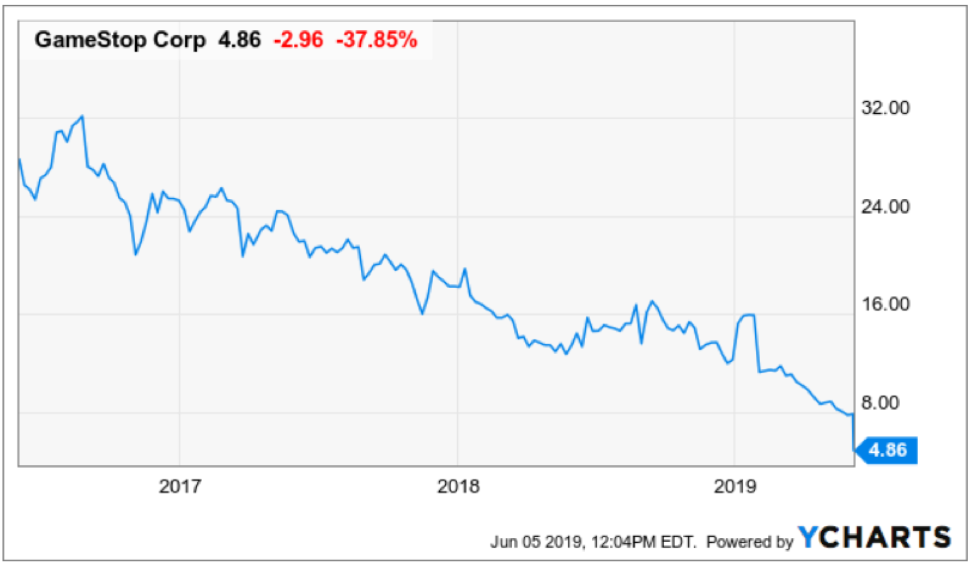
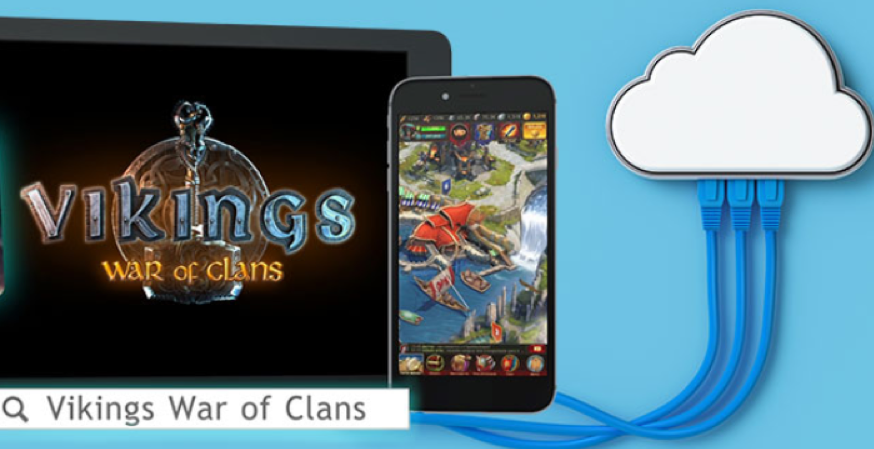
Mad Hedge Technology Letter
December 12, 2018
Fiat Lux
Featured Trade:
(WHY GAMERS ARE TAKING OVER THE WORLD)
(EA), (TTWO), (ATVI), (GME), (MSFT)

I nailed it.
The video game migration has been nothing short of bonkers for the average onlooker who has no interest in gaming.
Personally, I can’t really fathom spending every waking moment in front of a screen playing a game, but I was born in a different generation.
But for the younger generations, this is completely normal and a standard way to use extracurricular time.
This behavior is the origin hewing together a broader thesis of investing in behemoth video game companies boasting premium gameplay and high-quality content.
As the year inches closer to the finish line, I would have been proved correct if it wasn’t for one surprise that nobody could have ever predicted.
Enter Fortnite.
Fortnite has reigned supreme in 2018 and single-handedly tarnished the performance of the powerful trio of Electronic Arts (EA), Activision Blizzard (ATVI), and Take-Two Interactive (TTWO).
The multiplayer battle royale game is produced by Epic Games, an American video game developer based in Cary, North Carolina and this small town in Chatham County owns the video game world right now.
Funnily enough, the company was created by Tim Sweeney in 1991 in his parents' basement in Potomac, Maryland.
Epic Games blindsided the video game industry who believed barriers of entry were too high, and an outsider would have no chance to steal legitimate market share from the incumbents.
They thought wrong because Epic Games has done exactly that and more.
Instead of splurging on a pricey console and game titles, Fortnite has followed the cloud industry’s blueprint with a freemium model as an introductory way to lure in new users.
This must have Sony and Microsoft tearing their hair out because it could potentially rule the Xbox One and PS4 consoles obsolete.
How easy is it to play Fortnite?
Simply download and install the game for free on your Xbox One, Nintendo Switch, PlayStation 4, iPhone, Android, or Mac by opening the respective app store and selecting “Fortnite.”
That’s right, you can play this game on almost any platform appealing to the masses of fans.
Does this freemium model mean that Epic Games misses out on revenue?
Absolutely not.
The freemium model is just the conversional entry point to lure in new gamers.
Epic Games profits by selling in-game currency named V-Bucks or Vinderbucks used for purchasing items from the in-game Vindertech Store in Save the World, or to pocket cosmetic items from the Item Shop and the Battle Pass in Battle Royale.
V-Bucks revenue has been piling up with global gamers spending an average of $1.23 million per day in the iOS version for the month of November.
The number of total gamers recently eclipsed the 200 million mark and the previous recorded number was in June when Fortnite users totaled 125 million.
The 60% surge in five months has been the main catalyst for large video game makers to experience violent sell-offs because there is a direct correlation between growing Fortnite users and cratering usership from the traditional players.
Then throw in the mix of the secret recipe to Fortnite’s success - the mind-numbing speed and impact of the online updates enhancing the game; adding and adjusting weapons, providing new cosmetic items for players to buy and altering the game map.
Not only did Epic draw in new players in waves, it retained them just as well.
Putting the cherry on top, Fortnite made major cultural inroads into mainstream society legitimizing this title as the game of 2018.
This was evident during the Russia FIFA World Cup where star soccer players were doing Fortnite dances after scoring critical goals.
Put it this way, the game hasn’t even been allowed in China and is expected to earn over $2 billion in 2018.
As we speak, millions more plan to migrate from their former games enticed by the free battle royal platform.
The game is nothing short of a cultural phenomenon and none of the major video game developers can keep up.
Take-Two Interactive even had a smash hit come online with Red Dead Redemption 2, a Western-themed action-adventure game developed and published by Rockstar Games, lighting up screens all over the world.
Not even that could taper off the enthusiasm for Fortnite.
Activision cannot keep its gamers from jumping ship.
The mainstay game developer announced a major contraction of users from 345 million monthly active users for top games in its Candy Crush, World of Warcraft and Call of Duty franchises in the third quarter sharply down from 352 million users in the second quarter and 384 million users a year ago.
GameStop (GME) who recently slashed its full-year 2019 earnings outlook faces a grim 2019 as shares are down about 25% this year.
I perfectly predicted this and in almost every scenario, GameStop’s future looks ugly unless they do some major surgery to the business model.
There is no room for video game brokers anymore in this cloud-based world.
This is because new game studios will follow the Epic Games blueprint and bypass consoles all together and offer games for free.
The cloud will be the new go-to device for playing video games, and gamers will download games straight from the cloud via wireless broadband.
This trend is set to mushroom when 5G comes online in 2019 and 2020, connection speeds are expected to be 100 times faster than current 4G speeds.
In fact, the new consoles currently being developed by Nintendo, Microsoft, and Sony could be the last game consoles ever developed before they go extinct.
The digital revolution promises that hardware becomes incrementally slimmed down with every iteration until at some point there will be no hardware at all.
We have seen this trend in consumer devices with the smartphone, television, and desktop computer amongst other products.
This is why Microsoft (MSFT) has been busy buying up video game content producers, and confident in this sense that gold standard content truly is king.
It makes sense to put in more irons in the fire to potentially score a culture-shifting game like Fortnite. Not every video game will be a blockbuster hit, but the more video game developer Microsoft buys, there will be a higher chance of dominating the video game market.
Fortnite’s disruption of Activision, EA, and Take-Two Interactive signals a new beginning of the end for the traditional video game developers.
Darkhorse game developer could sprout up out of nowhere even more in 2019 offering console-less free games and leaner, nimbler models.
How are console manufacturers and game developers expected to keep up with the surge in gaming expectation?
The answer is they will not and look for these big three developers to attempt to stem the bleeding as Fortnite is expected to become even more thrilling next year tearing away more gamers from other systems in a dog-eat-dog world.
And then there is the possibility of the FANGs crossing over to gaming, searching for new growth drivers which would really flatten these shares like a pancake.
Microsoft is already deep into this industry, why wouldn’t their cousins follow them to profits too?
Ultimately, I am bearish on Activision, Electronic Arts, and Take-Two Interactive going into 2019 unless there is an upside catalyst that magically appears.
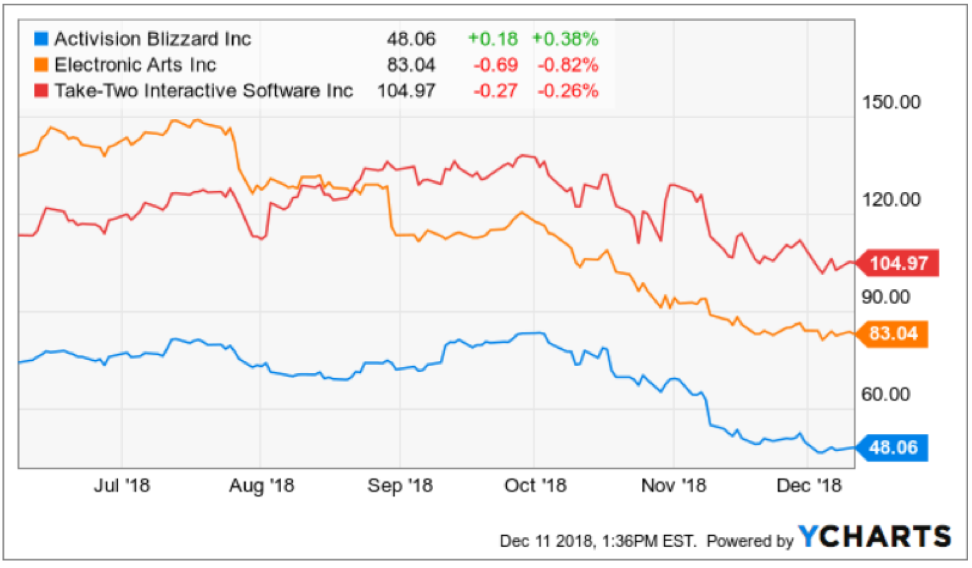
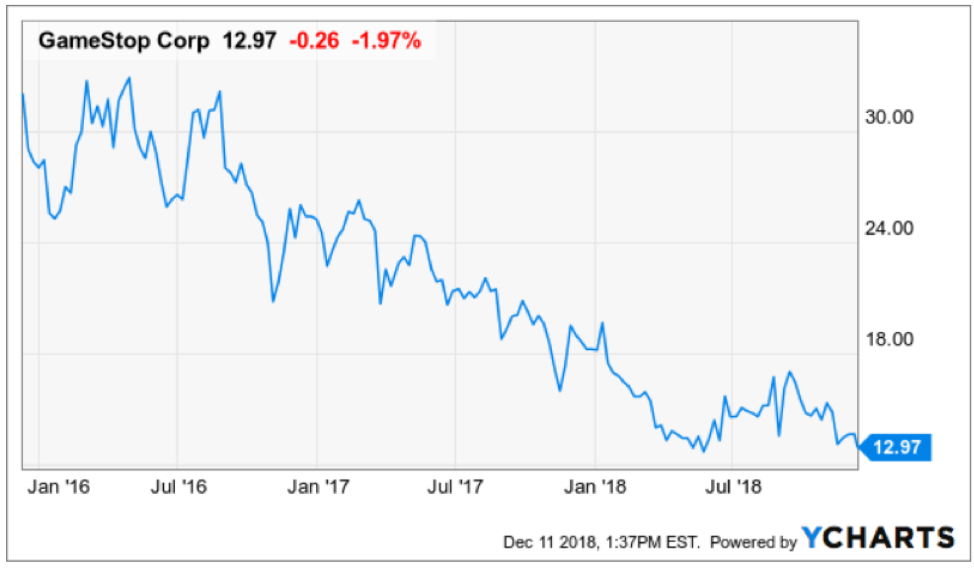

Mad Hedge Technology Letter
November 21, 2018
Fiat Lux
Featured Trade:
(FIVE TECH STOCKS TO SELL SHORT ON THE NEXT RALLY)
(WDC), (SNAP), (STX), (APRN), (AMZN), (KR), (WMT), (MSFT), (ATVI), (GME), (TTWO), (EA), (INTC), (AMD), (FB), (BBY), (COST), (MU)

Next year is poised to be a trading year that will bring tech investors an added dimension with the inclusion of Uber and Lyft to the public markets.
It seemed that everything that could have happened in 2018 happened.
Now, it’s time to bring you five companies that I believe could face a weak 2019.
Every rally should be met with a fresh wave of selling and one of these companies even has a good chance of not being around in 2020.
Western Digital (WDC)
I have been bearish on this company from the beginning of the Mad Hedge Technology Letter and this legacy firm is littered with numerous problems.
Western Digital’s structural story is broken at best.
They are in the business of selling hard disk drive products.
These products store data and have been around for a long time. Sure the technology has gotten better, but that does not mean the technology is more useful now.
The underlying issue with their business model is that companies are moving data and operations into cloud-based products like the Microsoft (MSFT) Azure and Amazon Web Services.
Why need a bulky hard drive to store stuff on when a cloud seamlessly connects with all devices and offers access to add-on tools that can boost efficiency and performance?
It’s a no-brainer for most companies and the efficiency effects are ratcheted up for large companies that can cohesively marry up all branches of the company onto one cloud system.
Even worse, (WDC) also manufactures the NAND chips that are placed in the hard drives.
NAND prices have faltered dropping 15% of late. NAND is like the ugly stepsister of DRAM whose large margins and higher demand insulate DRAM players who are dominated by Micron (MU), Samsung, and SK Hynix.
EPS is decelerating at a faster speed and quarterly sales revenue has plateaued.
Add this all up and you can understand why shares have halved this year and this was mainly a positive year for tech shares.
If there is a downtown next year in the broader market, watch out below as this company is first on the chopping block as well as its competitor Seagate Technology (STX).
Snapchat (SNAP)
This company must be the tech king of terrible business models out there.
Snapchat is part of an industry the whole western world is attempting to burn down.
Social media has gone for cute and lovable to destroy at all cost. The murky data-collecting antics social media companies deploy have regulators eyeing these companies daily.
More successful and profitable firm Facebook (FB) completely misunderstood the seriousness of regulation by pigeonholing it as a public relation slip-up instead of a full-blown crisis threatening American democracy.
Snapchat is presiding over falling daily active user growth at such an early stage that usership doesn’t even pass 100 million DAUs.
Management also alienated the core user base of adolescent-aged users by botching the redesign that resulted in users bailing out of Snapchat.
Snapchat has been losing high-level executives in spades and fired a good chunk of their software development team tagging them as the scapegoat that messed up the redesign.
Even more imminent, Snapchat is burning cash and could face a cash crunch in the middle of next year.
They just announced a new spectacle product placing two frontal cameras on the glass frame. Smells like desperation and that is because this company needs a miracle to turn things around.
If they hit the lottery, Snap could have an uptick in its prospects.
GameStop (GME)
This part of technology is hot, benefiting from a generational shift to playing video games.
Video games are now seen as a full-blown cash cow industry attracting gaming leagues where professional players taking in annual salaries of over $1 million.
Gaming is not going away but the method of which gaming is consumed is changing.
Gamers no longer venture out to the typical suburban mall to visit the local video games store.
The mushrooming of broad-band accessibility has migrated all games to direct downloads from the game manufacturers or gaming consoles’ official site.
The middleman has effectively been cut out.
That middleman is GameStop who will need to reinvent itself from a video game broker to something that can accrue real value in the video game world.
The long-term story is still intact for gaming manufactures of Activision (ATVI), EA Sports (EA), and Take-Two Interactive (TTWO).
The trio produces the highest quality American video games and has a broad portfolio of games that your kids know about.
GameStop’s annual revenue has been stagnant for the past four years.
It seems GameStop can’t find a way to boost its $9 billion of annual revenue and have been stuck on this number since 2015.
If you do wish to compare GameStop to a competitor, then they are up against Best Buy (BBY) which is a better and more efficiently run company.
Then if you have a yearning to buy video games from Best Buy, then you should ask yourself, why not just buy it from Amazon with 2-day free shipping as a prime member.
The silver lining of this business is that they have a nice niche collectibles division that hopes to deliver over $1 billion in annual sales next year growing at a 25% YOY clip.
But investors need to remember that this is mainly a trade-in used video game company.
Ultimately, the future looks bleak for GameStop in an era where the middleman has a direct path to the graveyard, and they have failed to digitize in an industry where digitization is at the forefront.
Blue Apron
This might be the company that is in most trouble on the list.
Active customers have fallen off a cliff declining by 25% so far in 2018.
Its third quarter earnings were nothing short of dreadful with revenue cratering 28% YOY to $150.6 million, missing estimates by $7 million.
The core business is disappearing like a Houdini act.
Revenue has been decelerating and the shrinking customer base is making the scope of the problem worse for management.
At first, Blue Apron basked in the glory of a first mover advantage and business was operating briskly.
But the lack of barriers to entry really hit the company between the eyes when Amazon (AMZN), Walmart (WMT), and Kroger (KR) rolled out their own version of the innovative meal kit.
Blue Apron recently announced it would lay off 4% of its workforce and its collaboration with big-box retailer Costco (COST) has been shelved indefinitely before the holiday season.
CFO of Blue Apron Tim Bensley forecasts that customers will continue to drop like flies in 2019.
The company has chosen to focus on higher-spending customers, meaning their total addressable market has been slashed and 2019 is shaping up to be a huge loss-making year for the company.
The change, in fact, has flustered investors and is a great explanation of why this stock is trading at $1.
The silver lining is that this stock can hardly trade any lower, but they have a mountain to climb along with strategic imperatives that must be immediately addressed as they descend into an existential crisis.
Intel (INTC)
This company is the best of the five so I am saving it for last.
Intel has fallen behind unable to keep up with upstart Advanced Micro Devices (AMD) led by stellar CEO Dr. Lisa Su.
Advanced Micro Devices is planning to launch a 7-nanometer CPU in the summer while Intel plans to roll out its next-generation 10-nanometer CPUs in early 2020.
The gulf is widening between the two with Advanced Micro Devices with the better technology.
As the new year inches closer, Intel will have a tough time beating last year's comps, and investors will need to reset expectations.
This year has really been a story of missteps for the chip titan.
Intel dealt with the specter security vulnerability that gave hackers access to private data but later fixed it.
Executive management problems haven’t helped at all.
Former CEO of Intel Brian Krzanich was fired soon after having an inappropriate relationship with an employee.
The company has been mired in R&D delays and engineering problems.
Dragging its feet could cause nightmares for its chip development for the long haul as they have lost significant market share to Advanced Micro Devices.
Then there is the general overhang of the trade war and Intel is one of the biggest earners on mainland China.
The tariff risk could hit the stock hard if the two sides get nasty with each other.
Then consider the chip sector is headed for a cyclical downturn which could dent the demand for Intel chip products.
The risks to this stock are endless and even though Intel registered a good earnings report last out, 2019 is set up with landmines galore.
If this stock treads water in 2019, I would call that a victory.
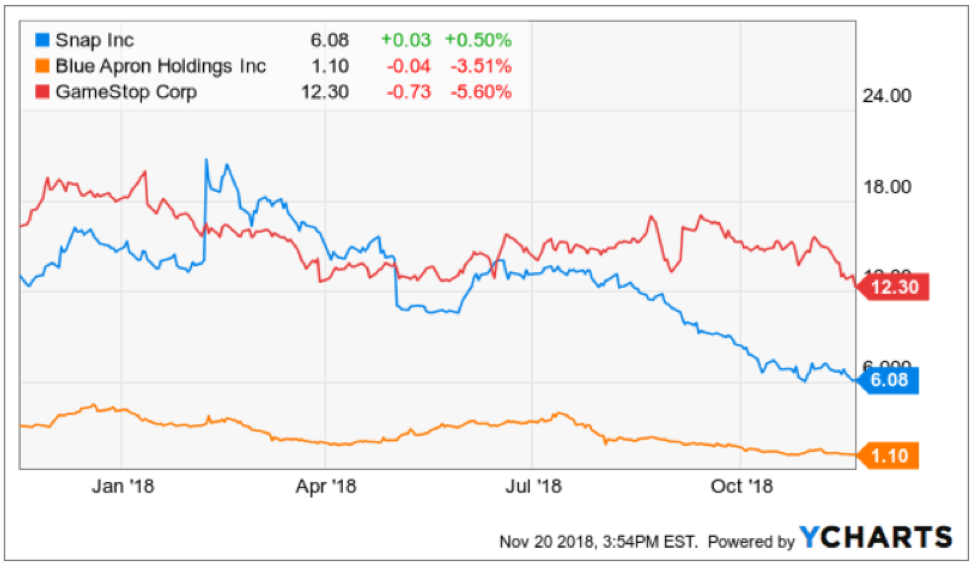
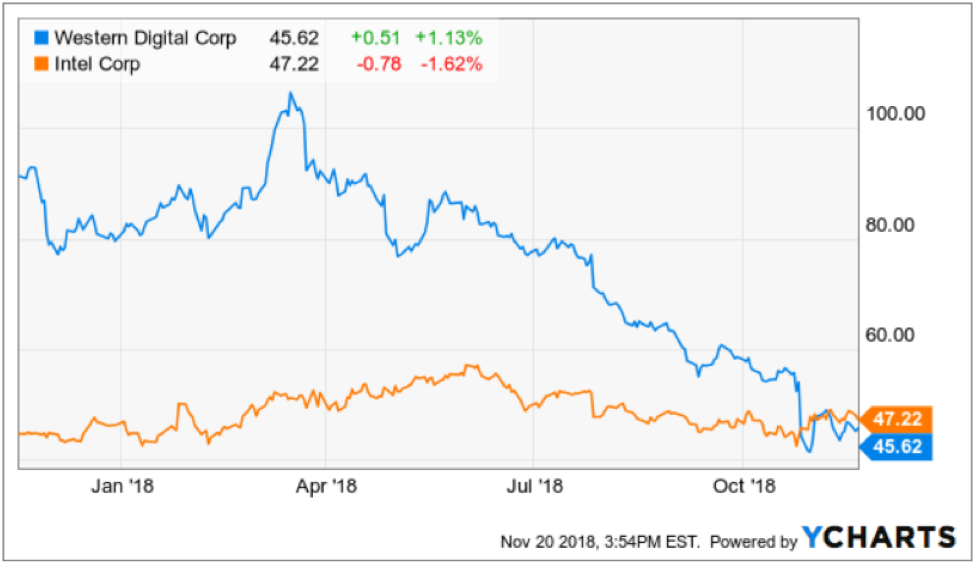
Mad Hedge Technology Letter
July 19, 2018
Fiat Lux
Featured Trade:
(AVOIDING THE BULLY),
(MSFT), (AMZN), (WMT), (GME), (ORCL), (GE), (CPB)

A bully stealing your lunch is not fun.
Partnering up to subdue a bully isn't only happening on the school playground.
Walmart (WMT) is doing it now, too.
Let me explain.
The Amazon (AMZN) effect is understood as the disruption of traditional brick-and-mortar business by Amazon's domination in e-commerce sales.
This phenomenon was all about how Amazon would take over, and by all means they are, and in brisk fashion.
That is why Amazon trade alerts from the Mad Hedge Technology Letter are nestled away in your email inbox.
Desperate times call for desperate measures.
Amazon competitors are facing an existential crisis they have never seen before.
The newest member of the FANG group, Walmart, is transforming into a tech company, and this metamorphosis is picking up steam.
To read my recent story about Walmart's headfirst dive into India, the newest battleground country, by way of its purchase of Indian e-commerce juggernaut Flipkart, please click here.
The second part of its strategy was revealed by announcing that Walmart would partner with Microsoft's (MSFT) cloud platform Azure to tap into the deep A.I. (artificial intelligence) and machine learning expertise.
If you can't beat them, find another competitor to help you change the status quo.
The five-year deal is a game changer in a coveted cloud industry pitting David vs. Goliath.
Amazon's footprint is wide reaching and bosses 33% of the cloud market it invented, far and away surpassing runner-up Microsoft, which garners just 13% market share.
Microsoft is catching up fast and that 13% was just 10% in 2016.
Microsoft and Walmart have a common foe that haunts them in their dreams.
These companies feel they are better served combining forces than being isolated from each other.
In an exclusive Wall Street Journal interview with Satya Nadella, Microsoft's CEO, Nadella directly confirmed what people already knew.
This strategic move "is absolutely core to this (Amazon threat)."
Walmart will use Microsoft's advanced cloud technology to optimize its operations from managing inventory, selecting the most suitable products to display, and running its equipment efficiently.
In 2016, Walmart's purchase of e-commerce company Jet.com was thoroughly integrated onto the Microsoft Azure. This further cooperation will help boost a company that has been aggressively vocal about its tech exploits.
High-quality products sell themselves and the story has played itself over again.
Microsoft is a master at luring in business through the front door, and padlocking the front gate procuring business for decades.
This case is no different and a vital reason the Mad Hedge Technology Letter has pinned down Microsoft as a top three tech stock.
Walmart also has made it crystal clear that a prerequisite for doing business with them is not doing business with Amazon Web Services (AWS), Amazon's lucrative cloud division.
Any profit dropping down to the (AWS) bottom line is used to wield against the retail landscape, damaging Walmart's prospects.
The Amazon effect is starting to work against Amazon, as the threat is forcing other businesses to adopt the same mind-set as Walmart.
Snowflake Computing, a private data firm focused on warehouse databases established by Bob Muglia in 2014, was exclusively available on the AWS platform.
However, more and more retailers such as Walmart started banging on Snowflake Computing's door demanding that it offer its cloud services on a cloud platform that is not its competitor.
Snowflake Computing obliged and is now up and running on Microsoft Azure.
Can you imagine the competition being able to sift through troves of data understanding every strength and weakness?
It's a one-way street to bankruptcy court.
Perhaps that explains why GameStop (GME) is such a poor performer, as its operations are entirely on (AWS).
GameStop is a stock that I am bearish on, because selling video games as a middleman is a legacy business.
Kids just download everything direct from the manufacturer from their broadband connection, making GameStop's business model obsolete.
It has a turnaround plan, apparently Oracle (ORCL) has one too, but it's barely begun.
Microsoft is a bad choice as well for GameStop, which is heart and center in the video game industry as well.
There are many alternatives; someone should notify recently installed GameStop CEO Daniel A. DeMatteo about one.
(AWS)'s dominance is benefitting Microsoft Azure explaining the rapid pace of cloud market share advancement.
This is just the tip of the iceberg. Walmart has some other irons in the fire.
Enter Project Kepler.
This is Walmart's response to Amazon Go stores, a partially automated retail store with no cashiers or checkout station, which currently has one functional location in Seattle.
Project Kepler is being developed by Jet.com co-founder and CTO Mike Hanrahan. And guess who is providing the technology for this alternative retail experience store - Microsoft.
Microsoft poached a computer vision specialist from Amazon Go who will help develop the appropriate sensors and computer vision algorithms necessary to get this store up and running.
These same sensors can be found in autonomous driving technology.
Shopping cart cameras could also be added to the mix to ensure quality and hopefully avoid the teething pains new technology grapples with.
Microsoft Azure CTO Mark Russinovich commented lately saying firms are on the front foot utilizing "A.I. and machine learning to automate processes to get insights into operations that they didn't have before."
Microsoft is perfectly set up to harvest many of these new contracts.
The deals have started to roll in.
Microsoft is successfully broadening its relationship with GE (GE), using the Azure data analytics capabilities to transform GE Digital's industrial IoT solutions.
This week also saw Microsoft scoop up Campbell Soup Company (CPB) as a new client, which decided on Microsoft Azure to modernize its IT infrastructure.
Campbell Soup will deploy Azure for real-time access to critical operations data, offering deeper intelligence for Campbell's senior management team.
This robust business activity is all because Microsoft is not Amazon, along with having a stellar product about which companies gloat.
Retailers have chosen Microsoft as the cloud platform of choice and expect the majority of retailers to tie their futures to Microsoft.
That's not the only iron in the fire.
Jetblack is another experimental retail service that Walmart is testing as we speak.
The service is still in beta mode in Manhattan targeting urban, high net worth mothers.
It emphasizes a personalized shopping experience in a narrow segment of goods that include household products, cosmetics, health and beauty products.
Shoppers will be able to snap photos of products and send them to Jetblack, receiving them at home with free shipping.
Customer service will be carried out by a high-quality lifelike bot, and Walmart intends to charge a membership fee to take part in this specialized shopping experience.
Microsoft subsidiary LinkedIn has also been leaning more on its parent company's technology lately.
LinkedIn software engineer Angelika Clayton wrote in her blog that "dozens of languages" are being converted into English via Microsoft Translator Text application programming interface, ballooning the candidate database for English speaking headhunters.
Could foreign language learning soon go way of the dodo bird and woolly mammoth?
Machine learning and A.I. have that type of power.
Tech analysts on the street must avoid issuing reports boasting that "everything is priced in," because these tech behemoths are driving innovation faster than people can understand it.
Walmart has turned into one of the most innovative companies around.
Who would have imagined this development a few years ago?
Nobody, not even Walmart itself.
Everything Microsoft touches lately turns into gold, along with being one of the more trusted tech titans out of the motley crew that has ruffled a few feathers this year.
Walmart is aggressively experimenting, systematically attempting to hop on new trends in retail hoping one or two will catch fire.
The credit must go to CEO Doug McMillon who has brought a tech first approach since being installed as CEO in 2014.
Even though conservative Walmart investors have penalized Walmart for the heavy spending, they must come to terms that Walmart's model is plain different now.
It's either spend or die in 2018.
Microsoft is in store to report its status on its pursuit of AWS, and I expect the company to inch closer with each earnings report.
Its outperforming Azure cloud business is in the first stages of a marathon, and sometimes it's not always salubrious to be the schoolyard bully because everybody starts avoiding you like the plague.




________________________________________________________________________________________________
Quote of the Day
"They broke the law on several occasions after being warned," said Larry Kudlow, director of the United States National Economic Council, when asked about Chinese company ZTE, which sold telecommunications equipment to Iran and North Korea.

Legal Disclaimer
There is a very high degree of risk involved in trading. Past results are not indicative of future returns. MadHedgeFundTrader.com and all individuals affiliated with this site assume no responsibilities for your trading and investment results. The indicators, strategies, columns, articles and all other features are for educational purposes only and should not be construed as investment advice. Information for futures trading observations are obtained from sources believed to be reliable, but we do not warrant its completeness or accuracy, or warrant any results from the use of the information. Your use of the trading observations is entirely at your own risk and it is your sole responsibility to evaluate the accuracy, completeness and usefulness of the information. You must assess the risk of any trade with your broker and make your own independent decisions regarding any securities mentioned herein. Affiliates of MadHedgeFundTrader.com may have a position or effect transactions in the securities described herein (or options thereon) and/or otherwise employ trading strategies that may be consistent or inconsistent with the provided strategies.
This site uses cookies. By continuing to browse the site, you are agreeing to our use of cookies.
OKLearn moreWe may request cookies to be set on your device. We use cookies to let us know when you visit our websites, how you interact with us, to enrich your user experience, and to customize your relationship with our website.
Click on the different category headings to find out more. You can also change some of your preferences. Note that blocking some types of cookies may impact your experience on our websites and the services we are able to offer.
These cookies are strictly necessary to provide you with services available through our website and to use some of its features.
Because these cookies are strictly necessary to deliver the website, refuseing them will have impact how our site functions. You always can block or delete cookies by changing your browser settings and force blocking all cookies on this website. But this will always prompt you to accept/refuse cookies when revisiting our site.
We fully respect if you want to refuse cookies but to avoid asking you again and again kindly allow us to store a cookie for that. You are free to opt out any time or opt in for other cookies to get a better experience. If you refuse cookies we will remove all set cookies in our domain.
We provide you with a list of stored cookies on your computer in our domain so you can check what we stored. Due to security reasons we are not able to show or modify cookies from other domains. You can check these in your browser security settings.
These cookies collect information that is used either in aggregate form to help us understand how our website is being used or how effective our marketing campaigns are, or to help us customize our website and application for you in order to enhance your experience.
If you do not want that we track your visist to our site you can disable tracking in your browser here:
We also use different external services like Google Webfonts, Google Maps, and external Video providers. Since these providers may collect personal data like your IP address we allow you to block them here. Please be aware that this might heavily reduce the functionality and appearance of our site. Changes will take effect once you reload the page.
Google Webfont Settings:
Google Map Settings:
Vimeo and Youtube video embeds:
